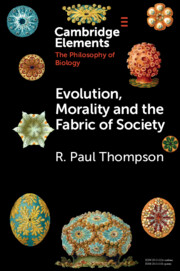Element contents
Evolution, Morality and the Fabric of Society
Published online by Cambridge University Press: 25 April 2022
Summary
- Type
- Element
- Information
- Online ISBN: 9781108680752Publisher: Cambridge University PressPrint publication: 19 May 2022
References
- 15
- Cited by

